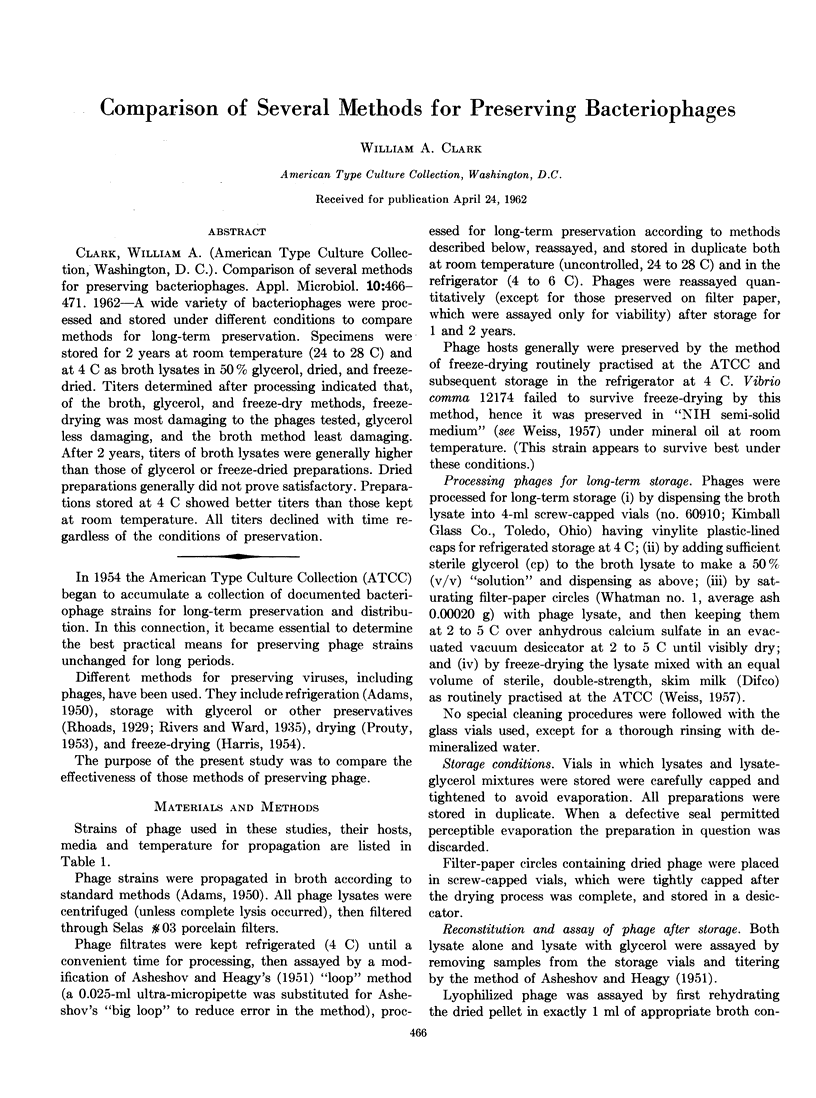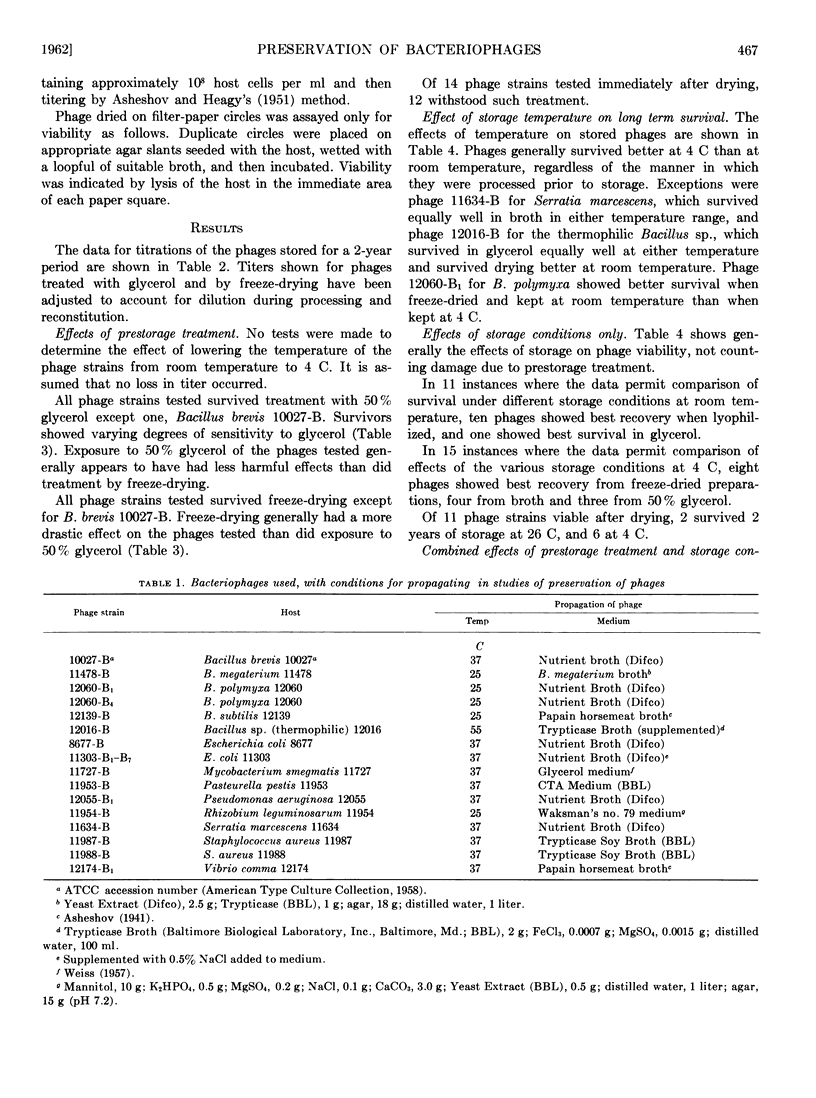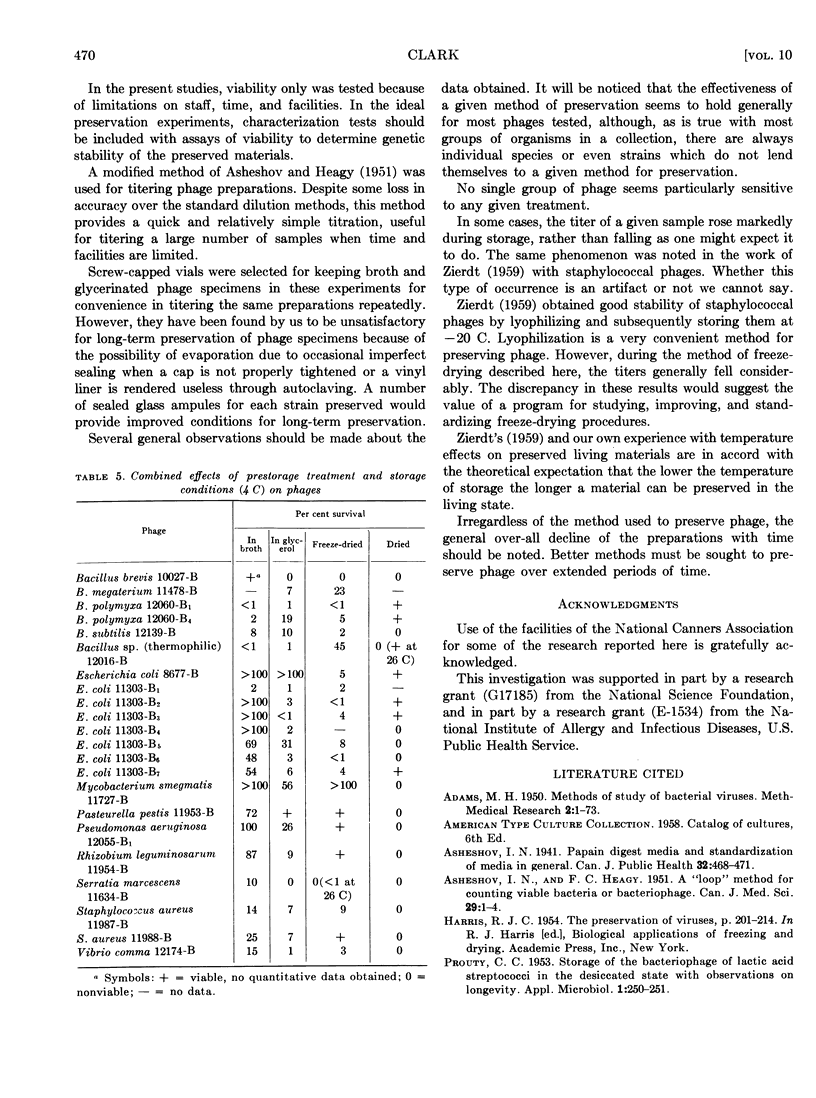Abstract
A wide variety of bacteriophages were processed and stored under different conditions to compare methods for long-term preservation. Specimens were stored for 2 years at room temperature (24 to 28 C) and at 4 C as broth lysates in 50% glycerol, dried, and freeze-dried. Titers determined after processing indicated that, of the broth, glycerol, and freeze-dry methods, freeze-drying was most damaging to the phages tested, glycerol less damaging, and the broth method least damaging. After 2 years, titers of broth lysates were generally higher than those of glycerol or freeze-dried preparations. Dried preparations generally did not prove satisfactory. Preparations stored at 4 C showed better titers than those kept at room temperature. All titers declined with time regardless of the conditions of preservation.
Full text
PDF





Selected References
These references are in PubMed. This may not be the complete list of references from this article.
- ASHESHOV I. N., HEAGY F. C. A "loop" method for counting viable bacteria or bacteriophage. Can J Med Sci. 1951 Feb;29(1):1–4. doi: 10.1139/cjms51-001. [DOI] [PubMed] [Google Scholar]
- PROUTY C. C. Storage of the bacteriophage of the lactic acid streptococci in the desiccated state with observations on longevity. Appl Microbiol. 1953 Sep;1(5):250–251. doi: 10.1128/am.1.5.250-251.1953. [DOI] [PMC free article] [PubMed] [Google Scholar]
- ZIERDT C. H. Preservation of staphylococcal bacteriophage by means of lyophilization. Am J Clin Pathol. 1959 Apr;31(4):326–331. doi: 10.1093/ajcp/31.4.326. [DOI] [PubMed] [Google Scholar]


